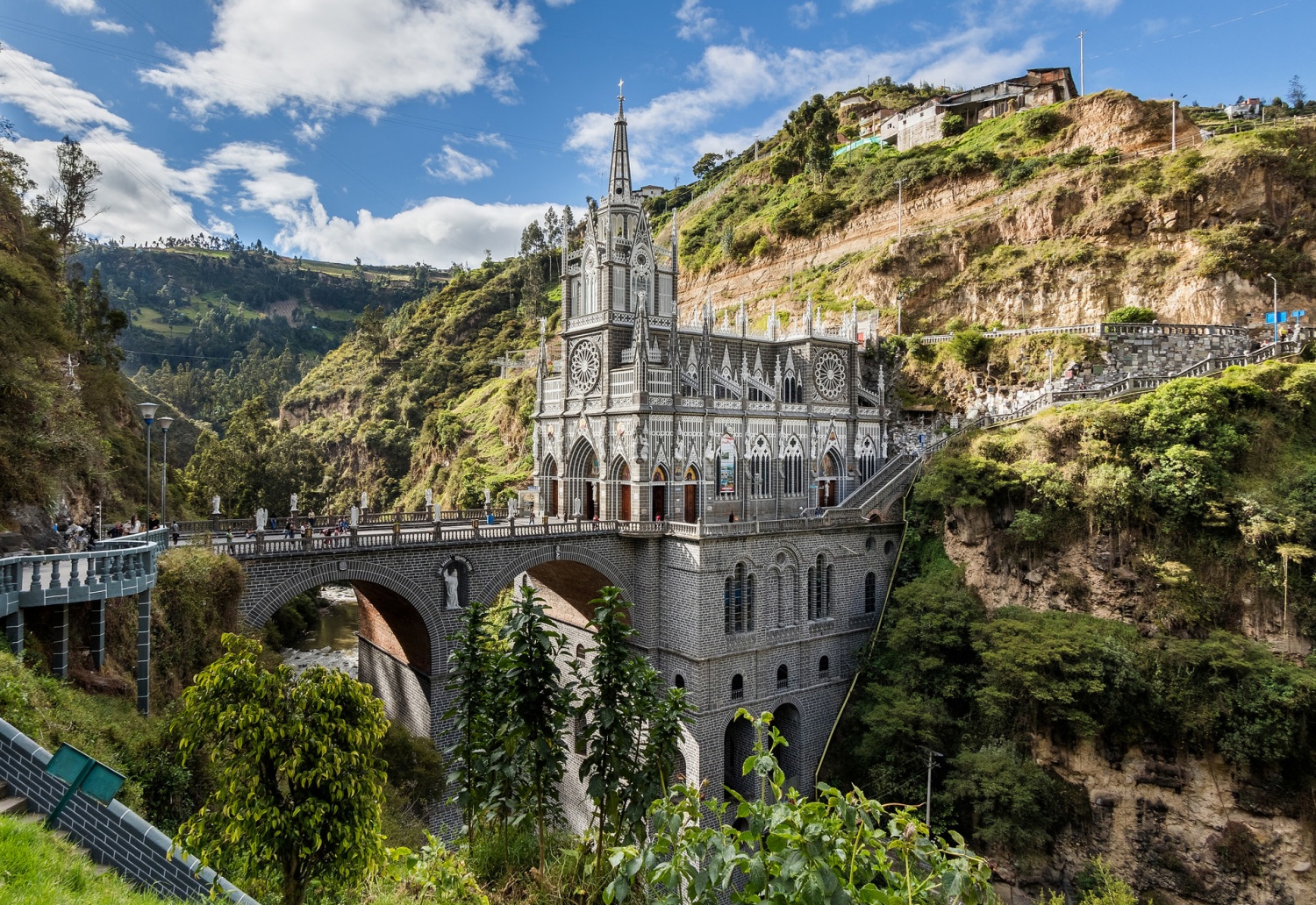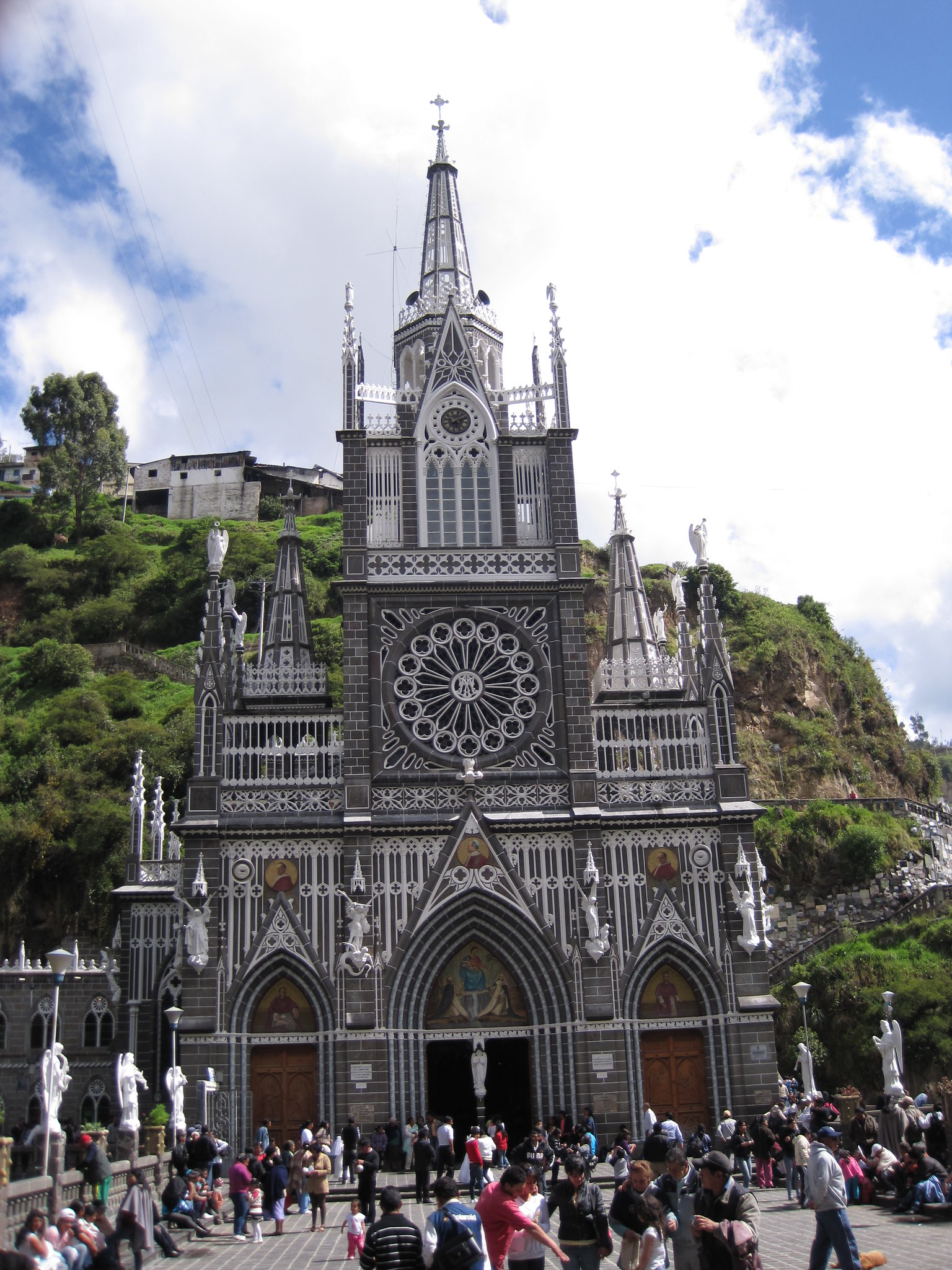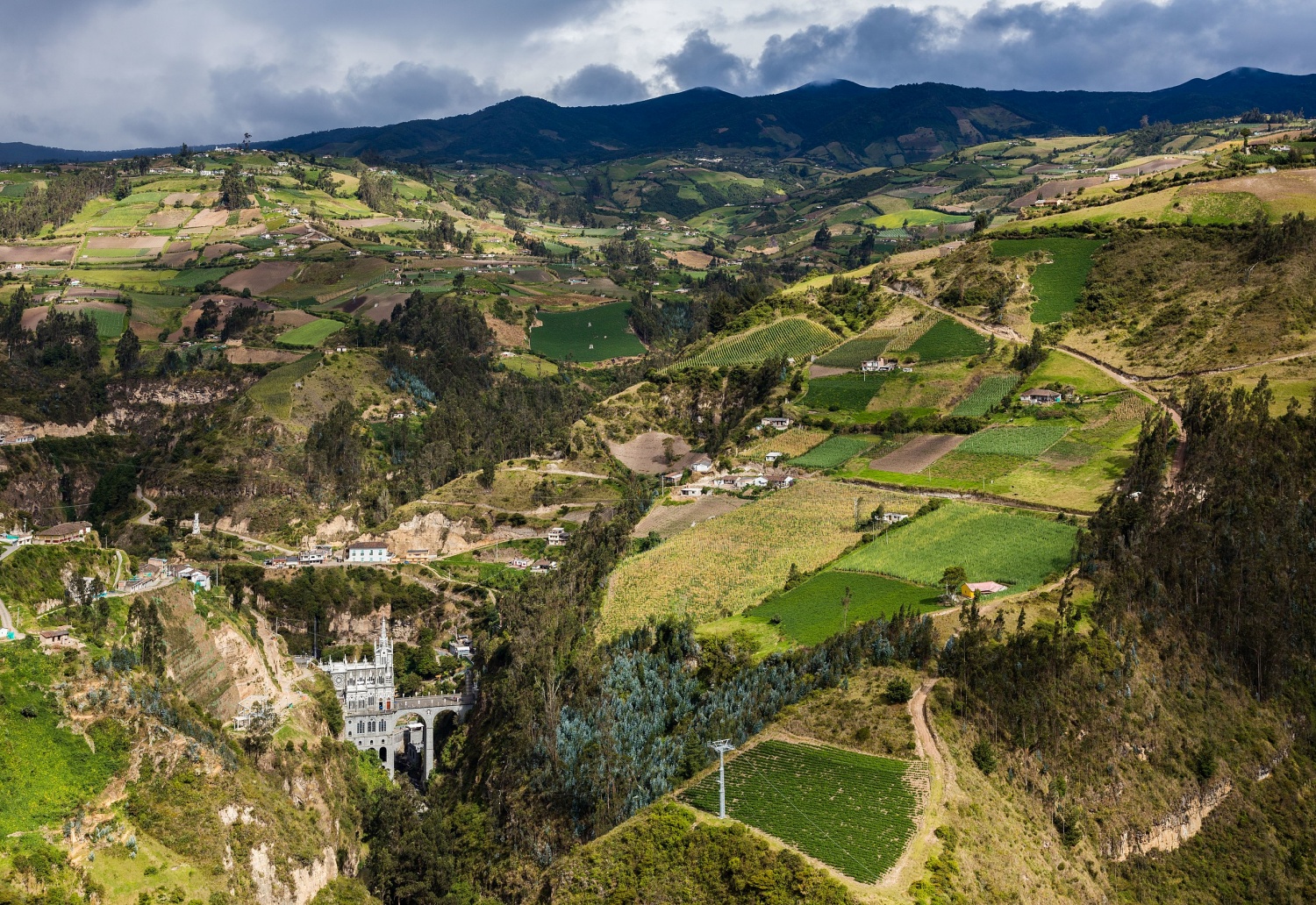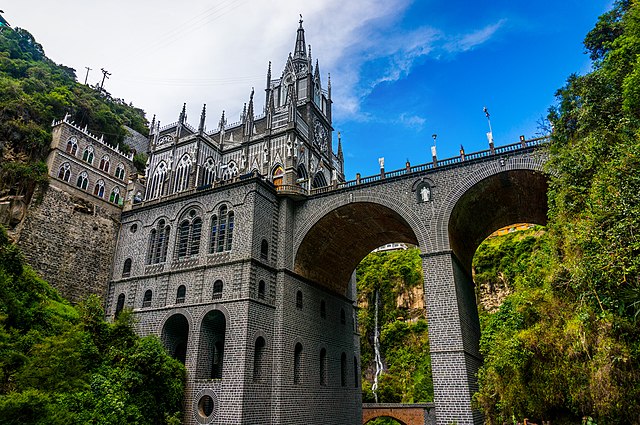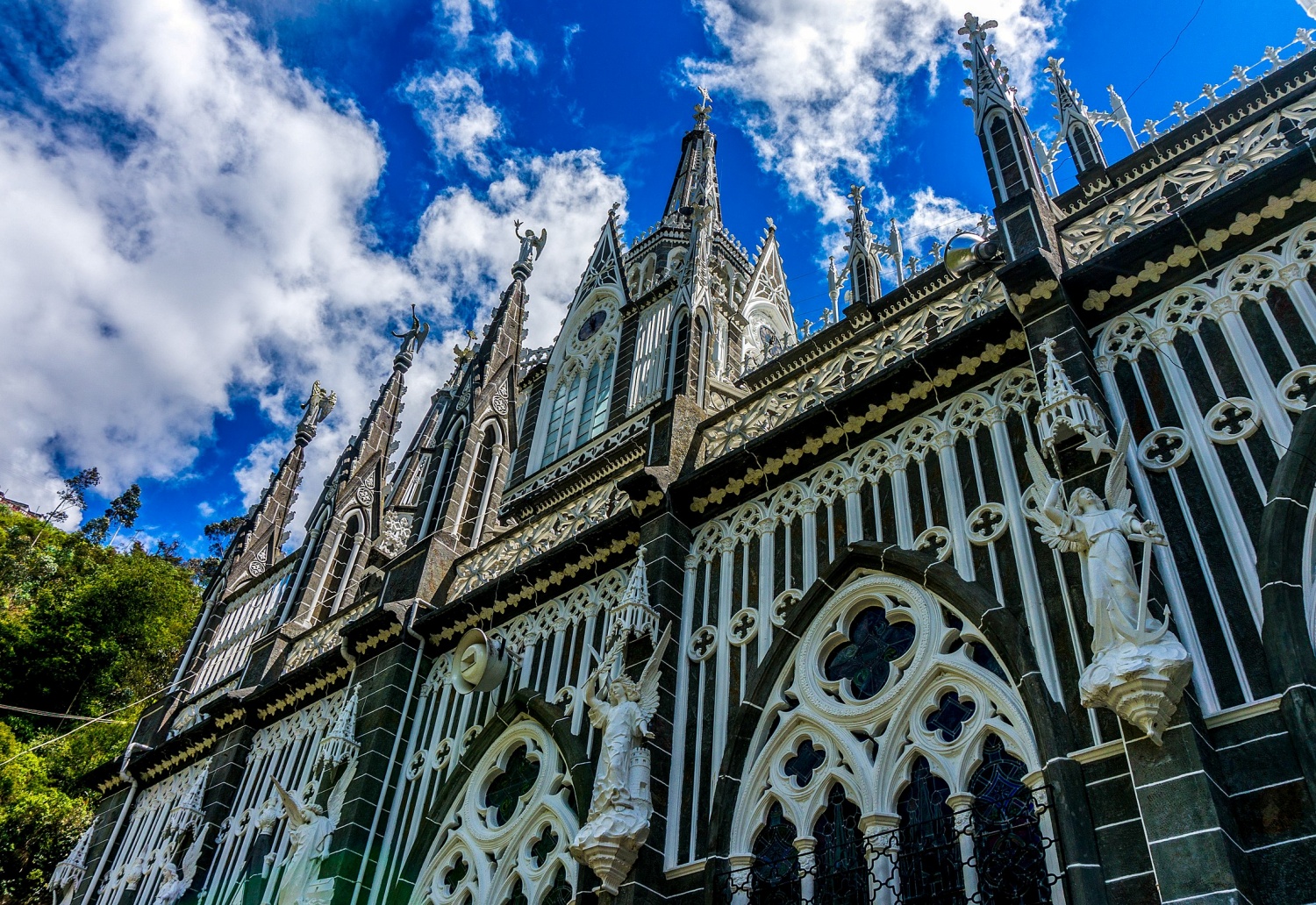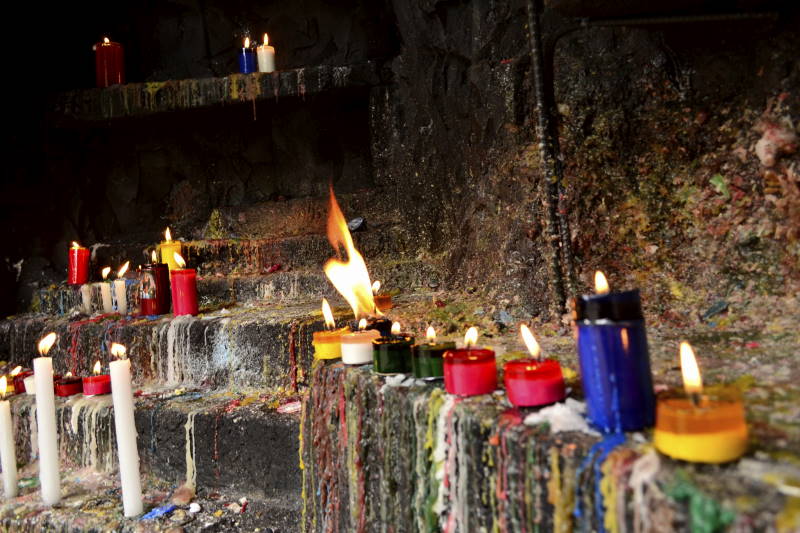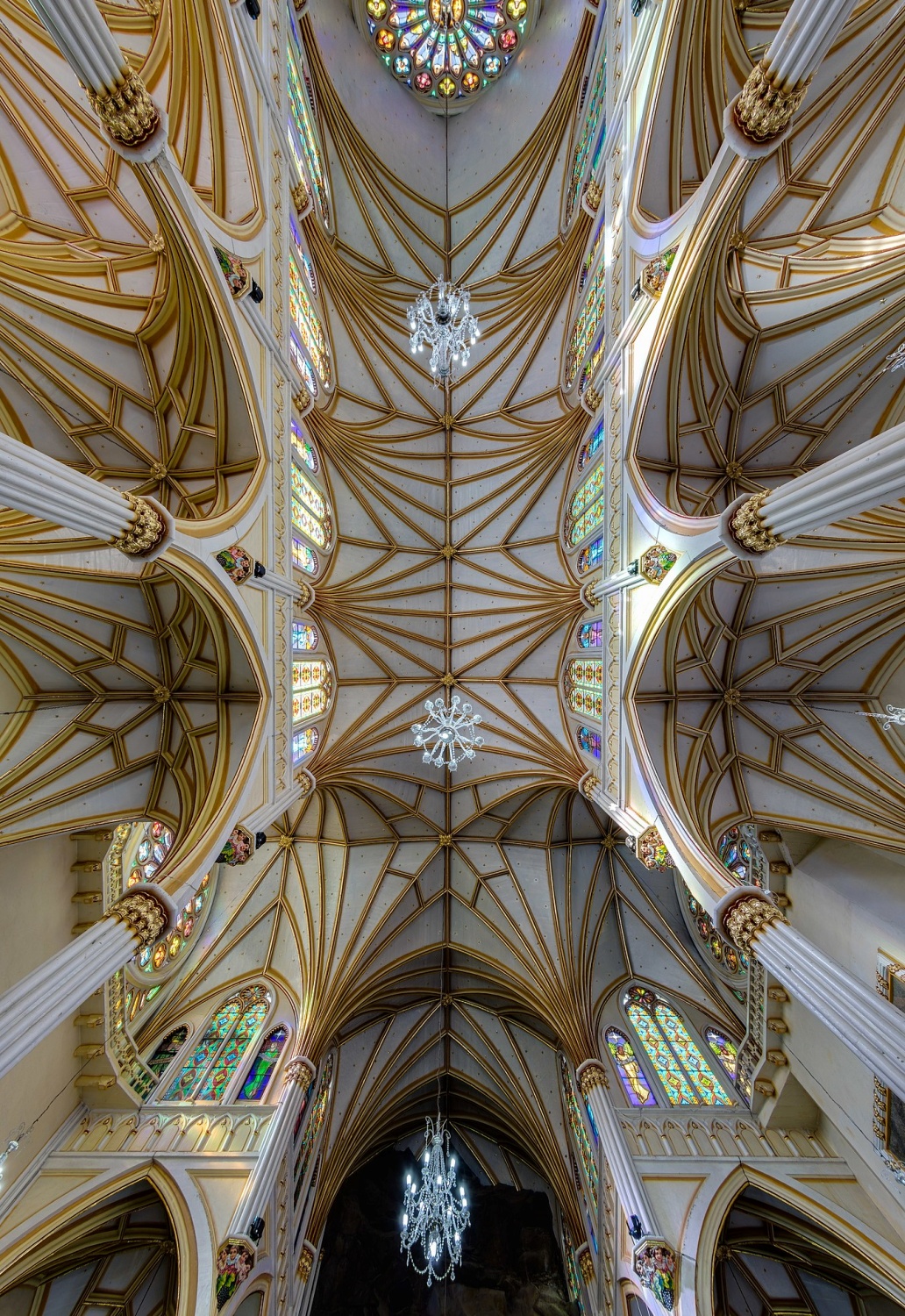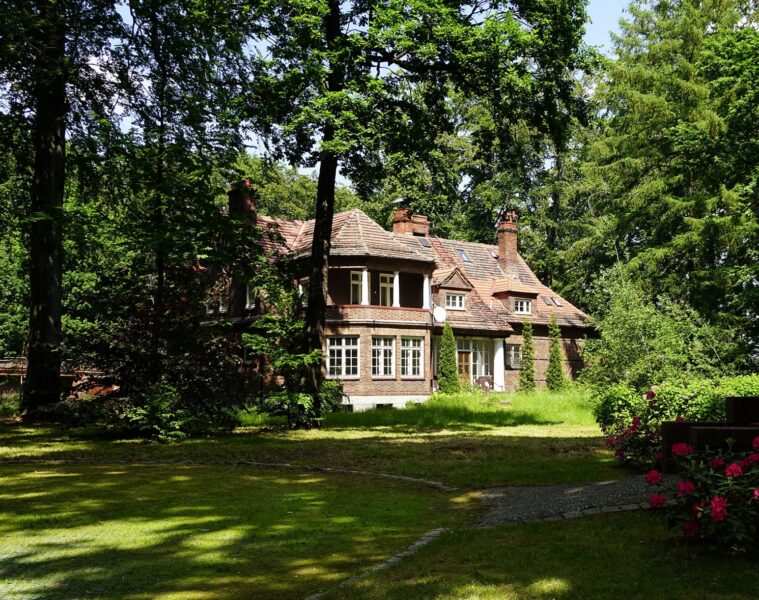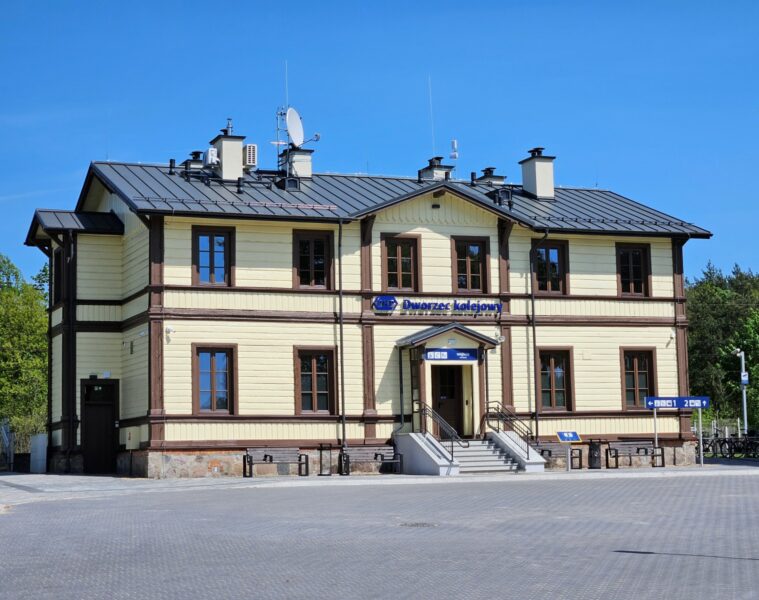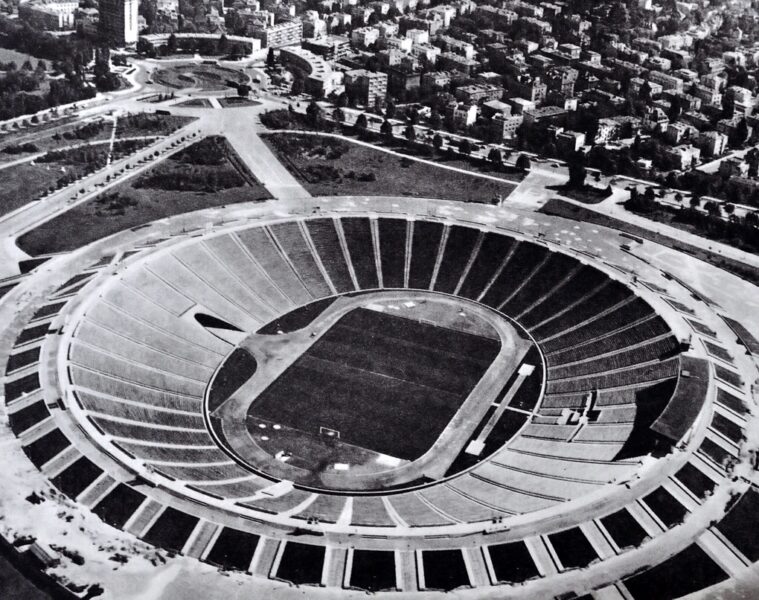The history of Las Lajas Basilica in Colombia is filled with stories of miracles and healings. The neo-Gothic church is suspended above the picturesque canyon of the Guáitara River, which flows near the border with Ecuador. The temple and the bridge on which the Las Lajas basilica stands are impressive displays of engineering and architecture. Although the basilica was only completed in the mid-20th century, the origins of the place of worship in the canyon date back to the 18th century.
The first chapel in the canyon was built in 1754 and was made of simple materials, mainly straw and wood. It was intended to commemorate a miracle that, according to legend, took place in a nearby cave. According to legend, Maria Mueses de Quinones and her deaf-mute daughter hid in the cave from a downpour. The girl miraculously regained her speech after seeing an image of the Virgin Mary on the cave wall. In time, the site became a pilgrimage point and visitors to the cave were said to experience equally miraculous recoveries.
In the 19th century, a small shrine and chapel were built in the cave. An artificial waterfall was also created next to it. However, it was not until 1916 that the construction of a full-fledged basilica began. The church was designed by Gualberto Pérez and Lucindo Espinosa, an architect and engineer from Ecuador. A 50 m high bridge was built, with a neo-Gothic basilica of the same height. From the outside, one can see the soaring turrets on the sides and the rosette in the middle. The façade is decorated with sculptures of angels and images of saints. Further sculptures of angels have been placed along the bridge.
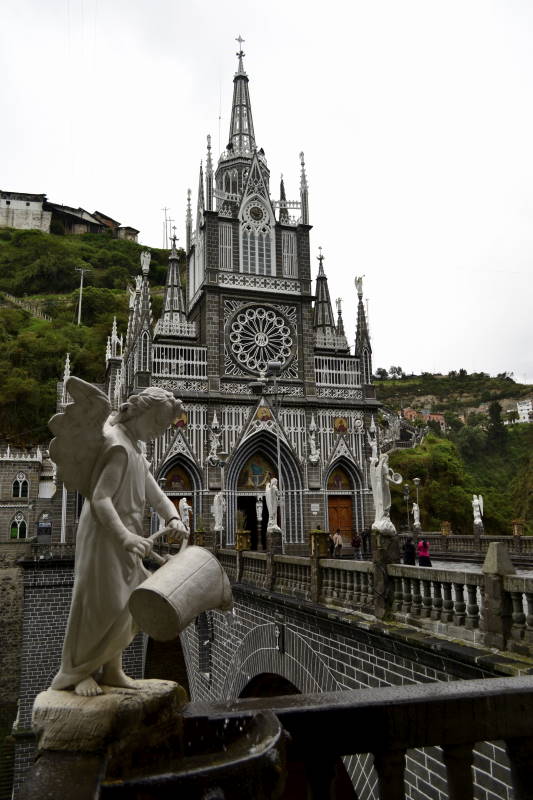
The miraculous basilica
Inside, the altarpiece of the Virgin Mary catches the eye. The painting depicts the Madonna holding Jesus in her arms and Saints: Francis and Dominic. The painting by an unknown author was executed on a rock. The rib and cross vault was decorated with gold. The soaring windows, on the other hand, feature stained-glass windows by the Italian artist Walter Wolf. Interestingly, the Spanish‘lajas’ means sedimentary rock, i.e. the rock on which the image of the Madonna was created.
Pope Pius XII canonically crowned the image of the Virgin in 1952. A few years later, the church was elevated to the rank of basilica minor. Today it is one of the most famous shrines in Colombia and Ecuador. Numerous groups of tourists flock to the basilica above the canyon and, according to reports, miraculous recoveries still take place today. The veracity of these events has not been verified. However, there are indeed many stories of this kind.
Source: Masterclass
Also read: Architecture | Curiosities | Sacred architecture | whiteMAD on Instagram

